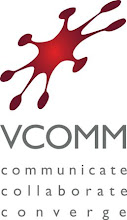VoIP Today spoke with Steven Johnson, president of Ingate Systems, about a recent announcement of a new SIP trunking deployment.
The installation showcases a critical issue many businesses are finding when they try to deploy SIP trunks while using Microsoft Office Communications Server (OCS) as the IP-PBX.
voiptoday.org: What are the challenges to deploying SIP trunks with Microsoft OCS?
Microsoft OCS 2007 uses TCP (Transmission Control Protocol)/IP. TCP/IP is one of the core protocols used in Unified Communications (UC) and allows for the reliable, ordered transmission of data.
SIP trunking service providers, however, generally use UDP (User Datagram Protocol) because it consumes less bandwidth.
The solution is to provide a seamless protocol conversion of TCP/IP to UDP. This is easily accomplished with a Session Border Controller such as the Ingate SIParator and is absolutely necessary in order to have SIP trunks work with the Microsoft OCS-enabled network.
voiptoday.org: Is this what Ingate did for Northern Michigan Substance Abuse Services, Inc. (NMSAS)?
Yes. Northern Michigan Substance Abuse Services, Inc. (NMSAS), which coordinates and oversees the delivery of substance abuse services for 30 counties in that state, had deployed SIP trunks from BBTelsys, a nationwide provider of Internet telephony and multi-dwelling unit triple play services. They were using Microsoft OCS 2007, and encountered the problem of TCP/IP-UDP incompatibility.
To address the issue, NMSAS deployed the Ingate SIParator with the Ingate SIP Trunking Software module, which works hand-in-hand with the BBTelsys service and NMSAS’ existing Microsoft OCS solution. The SIParator provided the crucial integration component necessary for SIP trunks to work with the IP-PBX.
voiptoday.org: What is the SIParator?
The SIParator is an Enterprise Session Border Controller (E-SBC) that enables SIP trunking by resolving Network Address Translation (NAT) traversal of SIP traffic. Working with the SIP Trunking Software module, it also normalizes the SIP signaling between the IP-PBX, in this case the Microsoft OCS server, and the BBTelsys service solving interoperability issues. The SIParator also secures VoIP calls made over the SIP trunk.
voiptoday.org: Is there, or will there be, a significant demand for this TCP/IP-to-UDP conversion capability?
Absolutely, we’re already seeing a spike in requests for this solution – and our VAR partners tell us the same thing. Microsoft OCS is an extremely popular SIP-based PBX, with a large installed base of users. SIP trunking is in demand as well, as a way to deploy VoIP quickly and easily and with a very fast return on investment. Microsoft OCS users want to leverage SIP trunks now. This solution addresses the incompatibility issue immediately. It also provides security for the SIP traffic (in this case, for VoIP) – another significant added benefit to incorporating the SIParator.
voiptoday.org: In the press release for the NMSAS deployment you talk about added benefits you brought to the table for the customer.
Yes. The BBTelsys and Ingate solution also addresses the advanced dialing requirements needed by NMSAS, to provide their clients with unparalleled privacy and security for VoIP calls.
As a substance abuse services facility, NMSAS offers counseling for clients over the phone. These clients are oftentimes at work; most require absolute privacy about their relationship with NMSAS. NMSAS needed to make sure that, when they called clients, the recipient’s caller ID display would come up as “anonymous.” Additionally, NMSAS wanted the flexibility of making calls without this “anonymous” option.
Ingate developed a simple dial plan solution harking back to the days of traditional wireline telephony. When calling a client, NMSAS workers need only dial “8” and then the phone number for the system to display an anonymous caller ID. Regular business-related calls, where an anonymous caller ID is not necessary, are preceded by a “9.”
About Ingate® Systems
Ingate® Systems develops firewall technology to enable global SIP-based person-to-person communication such as IP telephony, presence, Instant Messaging, video conferencing, IP-PBX connections and Unified Communications. With a history based in security, Ingate offers enterprises, service providers and carriers elegant solutions that make trusted SIP communications possible beyond the LAN. Among the company’s award-winning products are the Ingate Firewall® and Enterprise Session Border Controllers (E-SBCs) including the Ingate SIParator® and the Intertex IX78 E-SBC for operator volume SIP trunking deployments. These are widely used to connect service providers’ SIP trunks to enterprise IP-PBXs and Unified Communication solutions and to allow remote users outside the LAN. Ingate products are used by retail companies, financial institutions, industrial firms, government agencies and small-to-large enterprises throughout Europe, Asia and North America.
A leading educator on SIP trunking, Ingate hosts the SIP Trunk Seminar Series at the ITEXPO and the Ingate SIP Trunking Community at http://sip-trunking.tmcnet.com. Both bring together industry visionaries to generate awareness for the benefits of SIP, SIP trunks and Unified Communications.
Subscribe to:
Post Comments (Atom)





Really, this is awesome blog and has useful information about voip.thanks for sharing with us and keep it up....
ReplyDeleteThanks
Voip Services
Keep on working hard....Great job!
ReplyDelete